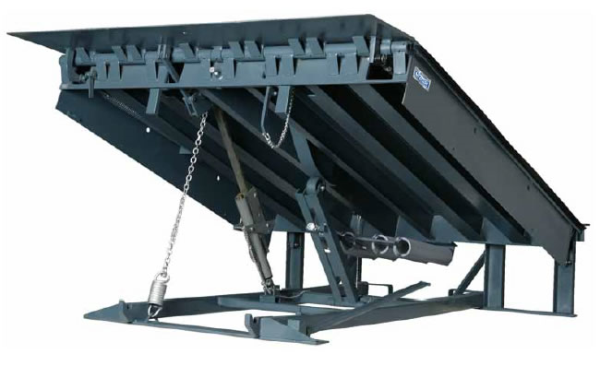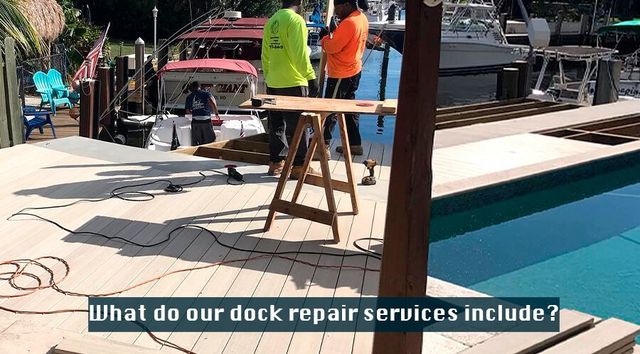Recognizing the Costs Involved in Dock Repairs
Recognizing the Costs Involved in Dock Repairs
Blog Article
Effective Dock Repair Techniques: Making Certain Architectural Honesty
Making sure the architectural stability of docks with efficient fixing techniques is vital for the durability and safety and security of aquatic centers. Ultimately, selecting the right repair work materials, such as composite products and corrosion-resistant alloys, is essential for durability.
Examining Dock Damage
Analyzing dock damage is a critical initial action in making sure the structural stability and safety and security of any type of docking facility. Secret aspects to check out consist of the dock's foundation, pilings, decking, and equipment (Dock Repairs).
Structural engineers or qualified inspectors normally carry out these evaluations making use of specialized tools and techniques. As an example, underwater inspections could employ finder equipment or remotely ran automobiles (ROVs) to find submerged damage. Over water, aesthetic evaluations are matched by utilizing dampness meters and various other diagnostic devices to uncover underlying concerns not promptly noticeable to the nude eye.

Choosing Repair Service Materials
Choosing the ideal repair work materials is a critical action in the dock remediation procedure, one that directly affects the long life and efficiency of the repaired structure. Product option should be driven by elements such as environmental conditions, load-bearing requirements, and compatibility with existing dock components. Timber is a traditional option for anchors due to its all-natural strength and visual charm. Picking the appropriate type of timber, such as pressure-treated lumber or normally rot-resistant types like cedar or teak wood, is vital to stand up to aquatic settings.
In addition to timber, composite products are progressively popular as a result of their sturdiness and low upkeep requirements. Composites, typically made from a blend of plastic and wood fibers, provide outstanding resistance to rot, insects, and UV damages. For metal docks, picking corrosion-resistant alloys such as galvanized steel or marine-grade aluminum is vital to prevent corrosion and guarantee architectural stability in saline water problems.
Epoxy resins and marine-grade sealers are important for repairing fractures and sealing joints, offering a water resistant obstacle and enhancing the dock's total strength. By carefully picking top notch materials, dock fixings can accomplish lasting results, thus safeguarding against future degradation and guaranteeing safe, trustworthy use.
Structural Reinforcement Techniques
Efficient architectural reinforcement strategies are essential in making sure the security and long life of dock repair work. One essential technique entails making use of steel or composite reinforcement bars (rebar) within concrete frameworks. Rebar supplies added tensile stamina, avoiding cracks and dispersing loads much more equally. This method is specifically effective for docks exposed to hefty loads or rough environmental problems.
An additional essential strategy is the application of fiber-reinforced polymers (FRP) These products supply high strength-to-weight ratios and superb resistance to deterioration, making them perfect for enhancing concrete or wood docks. FRP can be applied in strips or sheets and adhered with epoxy resins to boost structural integrity.
Supporting and securing systems additionally play a vital duty in structural reinforcement. Cross-bracing, using metal or wood beams, can combat lateral pressures, reducing swaying and motion. Securing systems, such as helical piers or driven stacks, give a secure foundation by moving tons to deeper, much more secure dirt layers.
Finally, the assimilation of load-distribution plates can assist disperse weight more evenly across the dock's surface, minimizing local anxiety factors. These methods collectively ensure that docks continue to be safe and durable, efficient in standing up to the roughness of their functional environment.
Advanced Repair Work Methods

One more sophisticated technique involves underwater welding, which permits repair services to be conducted without the need to dewater the area. This method is especially helpful for resolving structural issues in immersed dock components, making sure marginal interruption to procedures. Enhanced welding methods, coupled with robotic systems, supply precision and dependability, consequently prolonging the life expectancy of the dock.
Additionally, cathodic defense systems are carried out to prevent rust in metal dock structures. By using sacrificial anodes or impressed current systems, these strategies successfully minimize the electrochemical procedures that result in product wear and tear.
Finally, progressed surveillance modern technologies, such as structural wellness surveillance (SHM) systems, give real-time data on the condition of dock frameworks. These systems make it possible for aggressive maintenance and prompt treatments, ultimately guaranteeing the lasting structural integrity of the dock.
Maintenance and Prevention
Upkeep and prevention are basic ideas that underpin the durability and safety of dock structures. Normal assessments are paramount, allowing for early detection of deterioration, potential weak points, and ecological influences. A positive technique, entailing regular look for deterioration, rot, and structural shifts, alleviates pricey repair work and lengthens the dock's functional life.
Safety nets need to consist of applying safety layers to steel components to safeguard versus rust and utilizing treated timber to resist decay. Additionally, guaranteeing proper drain and ventilation can stop water build-up, which is a common root cause of structural deterioration. Incorporating top quality products and adhering to producer guidelines during building and construction and repair stages additionally play critical duties in improving toughness.

Educating employees in dock upkeep best practices makes sure constant application of safety nets. Leveraging technological breakthroughs, such as drones for examinations and sensing units for real-time monitoring, can even more boost maintenance efforts. By focusing on maintenance and prevention, dock owners can make sure architectural honesty, operational safety, and cost-effective monitoring over the dock's life-span.
Conclusion
In verdict, preserving the architectural honesty of aquatic facilities demands detailed dock repair service techniques. Thorough assessments utilizing innovative tools reveal both visible and hid damages, while the option of suitable repair service products enhances toughness. Applying structural reinforcement methods addresses stress and anxiety points effectively. Advanced repair strategies, paired with normal maintenance practices, ensure the dock stays functional and risk-free under diverse environmental problems. Embracing these techniques considerably prolongs the life-span and performance of aquatic framework.
Ensuring the architectural integrity of docks through effective repair methods is vital for the longevity and security of marine centers.Choosing the appropriate repair work materials is a critical step in the dock reconstruction procedure, one that directly influences the long life and performance of get redirected here the fixed framework.Reliable structural support techniques are critical in making certain the stability and longevity of dock fixings. By focusing on maintenance and avoidance, dock owners can guarantee architectural integrity, functional safety and security, and cost-effective administration over the dock's life-span.
In conclusion, keeping the architectural stability of aquatic centers necessitates detailed dock repair work techniques.
Report this page